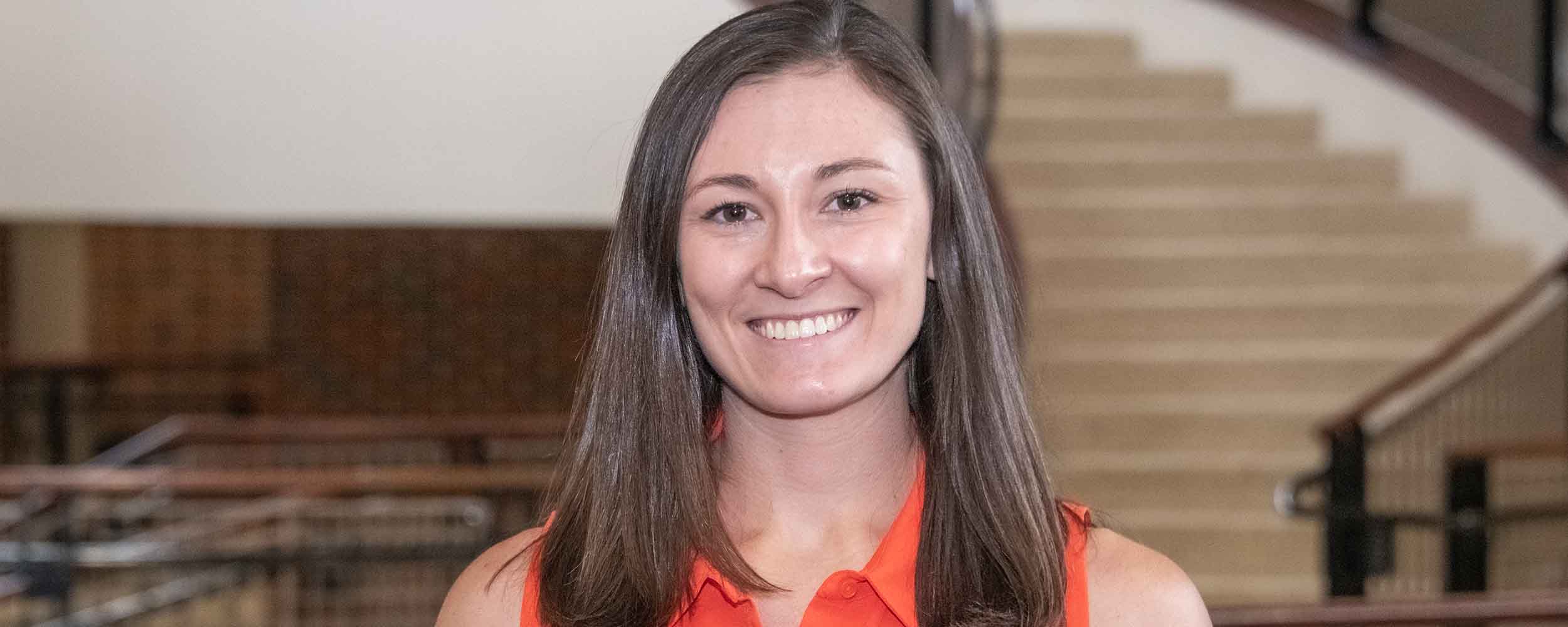
Meet Taylor Dinyer-McNeely, assistant professor in Kinesiology, Applied Health and Recreation
Monday, February 21, 2022
Media Contact: Katie Lacey | Communications Specialist | 405-744-9347 | katie.l.lacey@okstate.edu
Taylor Dinyer-McNeely is an assistant professor in Oklahoma State University’s School of Kinesiology, Applied Health and Recreation (KAHR) and co-director of the OSU Musculoskeletal Adaptations to Aging and Exercise (MAXX) Lab.
Dinyer-McNeely was a three-sport athlete growing up — competing in cross country, basketball, and track and field — and was recruited to run track at the collegiate level. Her success as an athlete led to her interest in how to increase performance and desire to know the “why” behind performance and fatigue. The field of exercise science provided her with the classes needed to learn and opportunities to ask and answer those questions. Dinyer-McNeely shared about her research and the work she is doing in OSU’s Maxx Lab on campus.
Why did you choose Oklahoma State University?
The faculty in KAHR are more than just people in a department. They are a team. I knew I wanted to be part of that and have the opportunity to work with experts in the field of applied exercise science and human performance. The opportunities are endless here. It was the perfect opportunity for me to continue to do what I love in a supportive and fun environment. There are tons of chances to collaborate within the department, college, and university. The opportunity to work alongside such wonderful researchers and colleagues is something that seems to be unmatched.
Can you share your research interests?
My primary research interest is skeletal muscle function and fatigue during acute and chronic exercise modalities. My team and I want to understand the “why” behind muscle fatigue and understand how we can improve performance and delay fatigue during exercise. The lab I oversee has a primary aim to understand what contributes to fatigue during various types of exercise. I also want to examine differences in fatigue between men and women to better understand exercise prescription in women. We plan to work with people across a variety of ages and backgrounds to understand fatigue and improve exercise, performance and movement across the lifespan for all populations.
What is the best part of your work?
I get to do what I love every day with students and colleagues who are just as excited as I am. The opportunity to work with students and see their excitement and curiosity grow is so fun and inspiring. I can’t imagine a better field or career. I love any opportunity to interact with students through teaching or research and help them learn and succeed. Dr. Bree Baker and I co-direct the MAAX Lab and we currently have undergraduates, master’s students, and Ph.D. students working with us on various research studies. We are also collaborating with some of the athletic teams on campus to start health and performance testing at various times throughout their respective seasons.
I am an avid exerciser myself. I love lifting weights and running. Part of what makes my job so fun is that I get to better understand why I am getting tired or fatigued during workouts! Also, I would encourage any student who thinks they might be slightly interested in research to reach out or come by the lab! We love being able to get students involved and it is a fun way for the students to apply what they are learning in class.
